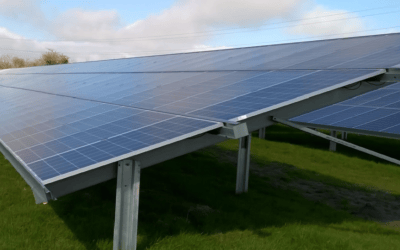Behind the meter: the way forward
A recent survey has revealed that nearly two thirds of companies with large energy bills are planning to invest in battery storage technology. The news is yet another example of how organisations are increasingly taking steps ‘behind the meter’, in order to control their energy costs and improve their carbon footprint.
Without doubt, the idea of operating behind the meter has been one of the most talked about subjects within the energy industry in recent years. But what does it mean in practice and how can businesses benefit from doing it?
What does behind the meter mean?
Any gas or electricity user – whether they are big or small, a domestic user, or a commercial or industrial organisation – will have meters on their premises that calculate how much energy has been taken from the grid and consequently how much is owed to the utility provider.
In simple terms, behind the meter refers to anything that happens onsite, on the energy user’s side of the meter. Conversely, anything that happens on the grid side is deemed to be in front of the meter.
So, why all the hype?
Until recently there was not much you could do behind the meter, bar turning off lights and equipment when they weren’t needed, in order to save money and reduce carbon emissions. The world, however, has changed and there are now a whole host of possibilities.
Renewable Energy
Investing in some form of renewable generation is increasingly popular. Solar photovoltaic (PV) panels and other power-generating renewable technologies, such as wind turbines and biomass, can all be used behind the meter, to reduce how much power needs to be taken from the grid.
The return on investment from such technologies can be significant. A good working example of this is Premier Inn, the chain of hotels owned by Whitbread. Premier Inn has invested in installing solar panels on more than 180 hotel rooftops across the country. In doing so, it has cut the amount of electricity it takes from the grid and reduced its carbon footprint substantially.
Battery Storage
Major technological advances, particularly in lithium ion systems, have seen battery storage shoot up in popularity for anyone looking to benefit from activity behind the meter. With battery prices at an all-time low it makes commercial sense to install this type of technology, either to store excess energy that is being generated by a renewable source, such as an onsite solar scheme, or simply to use the battery to store electricity from the grid when prices are low and discharge it when prices are high.
Demand Side Response
Demand Side Response (DSR) provides a way to earn additional revenue by helping to balance demands being placed on the grid. It can be carried out in a number of different ways. High energy users may reduce their demands at peak times, or when requested by National Grid. As an example, a manufacturer may avoid carrying out an energy consuming activity during peak times of demand, and instead move it to a different time of the day. In the case of battery storage, a business may also support grid stabilisation by storing electricity and then discharging it back into the grid at peak times, to help meet supply and demand.
Additional Revenues Streams
National Grid is required to provide electricity at 50Hz, plus or minus 1%. This strict regulation means it needs flexibility to balance the system. It does this in several ways, including through the Firm Frequency Response (FFR) market. Battery owners can offer a fast, reliable response, either on their own, or if they are big enough, through an aggregator. By taking part in the FFR market, a regular stream of revenue can be secured.
Other Benefits
Taking steps behind the meter also offers many other benefits. For instance, an Electrical Energy Storage System (EESS) can act as an uninterruptible power supply (UPS), providing a backup in the case of a blackout or power cut. This resilience is particularly important for power critical operations, such as hospitals and production lines.
Similarly, an EESS can help with power conditioning if a brownout strikes and National Grid needs to reduce the voltage of supply. A less common benefit, but a significant one nonetheless, is the opportunity behind the meter storage offers for large energy users to reduce their connection charges. These vary depending on peak import and export volumes. What a battery storage system allows an organisation to do, it is to smooth out its peaks.
Why behind the meter should be on the agenda
When done effectively, taking steps behind the meter can provide many benefits. With energy prices on the rise and growing demands being placed on organisations to be ‘greener’, it also makes sense to take as much control over energy use as possible.





